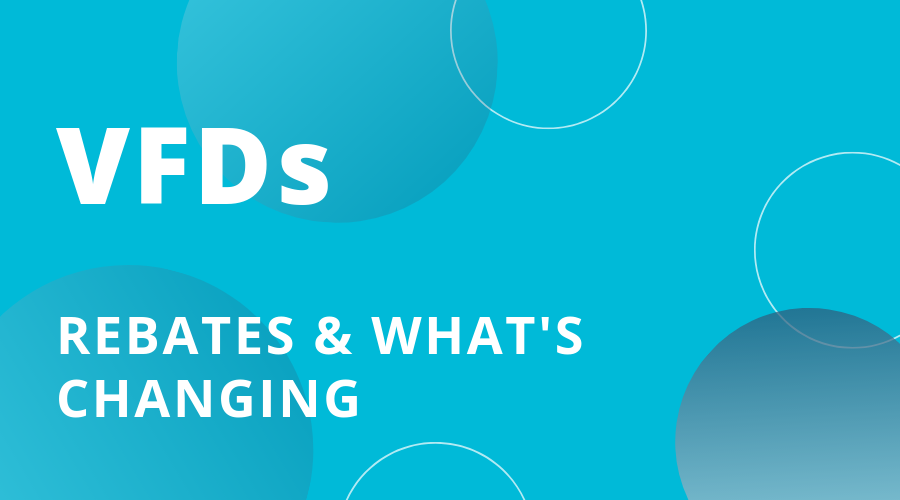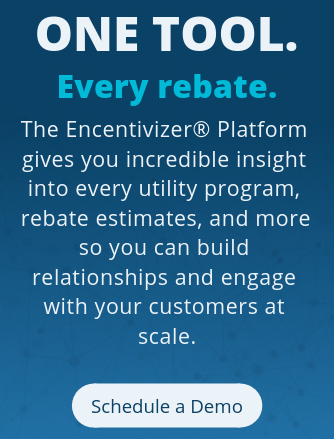
Having just completed the analysis of incentives for VFDs(using UtilityGenius) and seeing the results, I thought this would be an interesting topic to share with you. I believe that industrial/motor rebates are going to be a bigger part of our future.
Variable Frequency Drives (VFDs) are devices that control motor speed and torque, allowing for variable speed operations in the motors that they are attached to. This variable speed capability creates opportunity for more efficient use of energy. Hence, utilities are interested in incentivizing the purchase and installation of these devices in commercial and industrial settings.
VFD Incentive Approach
Incentives for VFDs are primarily determined by three factors. Let’s take a look at each one.
Application Context
This is the environment into which the VFD is being introduced. The primary options are:
- HVAC - Attached to motors in an HVAC system
- Agriculture - Attached to motors in an Agricultural application.
- Industrial/Process - Attached to motors in an Industrial facility
- Recreation - Attached motors in a recreational context like a pool
Motor Equipment
What type of equipment is the motor being utilized in. Some examples are:
- Fans
- Pumps
- Compressors
- Exhausts
- Chillers
Horsepower
VFDs will increase what horsepower load they work with or support. The horsepower is what effectively determines the amount of load that is supported and therefore how much energy savings potential exists by using one.
Commonly, a utility incentive will be calculated by looking up what the dollars($)/horsepower that is paid for a drive on the specific type of equipment in the specific context. (i.e. $75/hp on an HVAC return fan)
VFD Incentives
Top Facts:
- VFD Utility incentives are offered by approximately 700 utilities
- Incentives vary from $150/hp to $16/hp
- In most cases, the VFD incentive is for adding a VFD to existing equipment, but in some cases there can be an incentive for adding a VFD to new equipment
- In most cases, there is no incentive for replacing a VFD with another VFD
- For some programs, the VFD must be installed on equipment that operates during peak load hours
Now, let’s take a look at the top utilities for highest rebates for three types of VFDs.
Top Utilities for HVAC VFDs
- MassSave - National Grid/Eversource
- National Grid Rhode Island
- Xcel Colorado
- Snohomish
- Eversource New Hampshire
- Efficiency Vermont
- Baltimore Gas & Electric
- Delmarva Power
- PEPCO (Maryland)
- Potomac Edison
- SMECO
- Xcel New Mexico
Top Utilities for Industrial VFDs
- Xcel Colorado
- TEPCO
- City of Anoka
- Consumers Energy
- Efficiency Works Colorado
- Arizona Public Service
- Save On Energy Ontario
- First Energy PA
- Lincoln Electric System
*having 9 utilities listed here is intentional, showing only the top utilities that offer the highest rebates for industrial VFDs where a natural, significant break in the rebate amount occurred
Top Utilities for Agricultural VFDs
- Xcel Colorado
- Holy Cross Energy
- Xcel New Mexico
- Xcel Minnesota
- Efficiency Works Colorado
- Efficiency Alberta
- Southern California Edison
- Chelan County
- Save On Energy Ontario
- Focus On Energy Wisconsin
Changes In Incentives
Utility incentives are modified throughout the year. Some examples of recent changes in VFD incentives for HVAC Fans:
- PECO changed from $25/hp to $50/hp
- ComEd changed from $60/hp to $80/hp
- Efficiency United changed from $50/hp to $65/hp
- Vectren Indiana changed from $60/hp to $45/hp
- Alliant Energy changed from $35/hp to $30/hp
VFDs are a viable and growing part of utility energy efficiency rebates. As utilities continue to look for other sources of energy savings beyond lighting, VFDs and more efficiency motors will continue to be an important part of their portfolio of rebates.
.png?width=500&name=2019%20e%20news%20spotlight%20logo%20(1).png)




